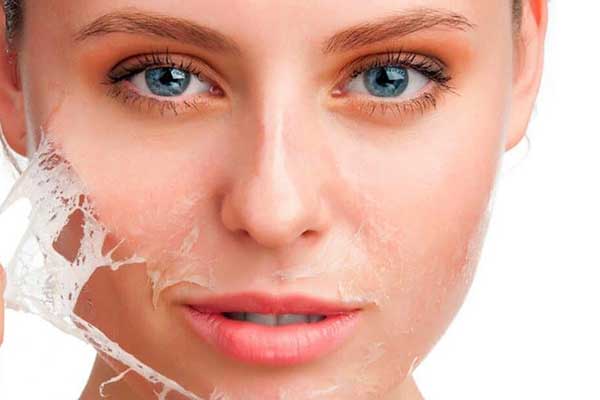Chemical peel
Beautiful and healthy skin is a goal that everyone strives for, and chemical peels are one of the effective and scientifically proven treatments to improve skin quality and tone. This treatment is suitable for a variety of skin problems, from acne to pigmentation and fine wrinkles. In this article, we’ll explore the benefits of a chemical peel, its types, method, potential risks, and tips for getting the best results.Benefits of a chemical peel
Improve skin appearance and tone
When the damaged and dead top layer of skin is removed using chemical acids, a new layer of skin appears that is smoother and more uniform in skin tone. This results in a brighter, more youthful appearance.
Reducing the appearance of wrinkles and fine lines
Chemical peels stimulate the production of collagen, the vital protein that gives skin its elasticity and plumpness. Thus, it helps reduce the appearance of wrinkles and fine lines on the skin.
Treating acne and skin pigmentation
Chemical peels purify pores and remove impurities and accumulated sebum that may cause acne. It also works to lighten skin pigmentation and dark spots, making the skin more regular in color.
Stimulating collagen production and cell regeneration
Chemical peeling stimulates the skin to produce more collagen, which enhances its elasticity and helps in the natural and regular renewal of human cells.

Types of chemical peels
Chemical peels vary depending on the depth of the peel and the type of acid used. The following is an overview of its most prominent types:
superficial peeling
This type is based on the use of mild acids to remove the upper layer of the skin. It is suitable for improving the appearance of dull skin and unifying its color, and recovery after this type usually takes only a few days.
Medium peel
It uses stronger acids to affect the deeper layers of the skin. It is preferred for treating skin pigmentation and reducing the effects of acne and superficial scars. Recovery after this type takes 7 to 10 days.
Deep peeling
This type is the most effective and deep, as it uses strong acids to reach the deeper layers of the skin. It is used to treat deep wrinkles and prominent scars, and recovery after this type usually takes 2 to 4 weeks.
Acids used in chemical peels
The acids used in chemical peels differ based on the type of skin and the desired goal of the treatment. The following are the most important acids used:
glycolic acid
It is one of the most popular acids used in chemical peeling. Where it purifies pores and improves skin texture.
Salicylic acid
It is used to get rid of impurities and excess sebum, which makes it ideal for treating acne.
lactic acid
It moisturizes and brightens the skin, and is suitable for sensitive skin.
Trichloroacetic acid (TCA)
It is used for deep exfoliation and treatment of deep wrinkles and scars.
How to perform a chemical peel
Preparing for the session
Before starting a chemical peel session, it is recommended to perform a skin tolerance test to check for sensitivity. Direct exposure to sunlight should also be avoided for a period before the session.
Apply the appropriate solution
The appropriate solution is carefully applied to the skin for a specified period, and this period varies according to the type of peeling used.
Stages of recovery and skin care after the session
After the session, the skin may feel some redness and irritation, which is normal. You should avoid exposing the skin to direct sunlight and use appropriate care products.
Risks and side effects of chemical peels
Despite its benefits, you should be aware of some potential risks and side effects of chemical peels:
Irritation and redness
Your skin may experience some redness and irritation in the first days after the session, but these symptoms usually disappear gradually.
Peeling and swelling of the skin
Mild peeling of the skin may occur during the healing period, which is a normal sign of skin cell regeneration.
skin Sensitivity
Some people may be sensitive to the acids used in exfoliation, and allergies can exacerbate irritation.
Temporary pigmentation
Some temporary pigmentation may appear on the skin after the session, but it will naturally disappear over time.
Who are the suitable candidates for chemical peeling?
Chemical peels are a safe treatment for many people, however, there are some criteria that make some people more suitable for this treatment than others:
The best skins are suitable for this treatment
Chemical peeling is suitable for skin that suffers from wrinkles, skin pigmentation, acne, and pigmentation caused by sun exposure.
People with certain skin problems
Chemical peels are suitable for people with both superficial and deep skin imperfections such as scars, freckles and wrinkles.
Cost and required sessions
The cost of a chemical peel session varies based on the type of peel and the location of the treatment. Usually, the cost may range from 100 to 500 dollars per session. You may need several sessions to achieve the desired results, and the number of sessions required is affected by the type and condition of the skin.
Recommendations and tips after a chemical peel
After a chemical peel session, some recommendations must be followed to maintain results and reduce potential complications:
Home skin care after the session
Light and soothing moisturizers should be used to moisturize the skin after the session, and avoid using strong products that may increase irritation.
Use sunscreen regularly
People who have undergone a chemical peel should avoid exposure to direct sunlight and use sunscreen periodically to maintain the results of the treatment and avoid new pigmentation.
Do not use strong cosmetics
You should avoid using strong cosmetics or burning chemicals during the healing period, so that the skin does not get irritated and damaged.
Chemical peels and pregnancy
Although chemical peels are effective, they are not suitable for pregnant women. The chemical acids used in the treatment may cause irritation and redness to the skin, which may adversely affect the pregnancy. Therefore, you should avoid chemical peels during pregnancy and look for safe alternatives.
conclusion
Chemical peels are an effective and safe treatment for improving skin quality and appearance. It offers multiple benefits such as unifying skin tone, improving its elasticity, and treating surface blemishes. The necessary post-session recommendations must be observed to maintain the desired results and avoid exposure to potential side effects.
